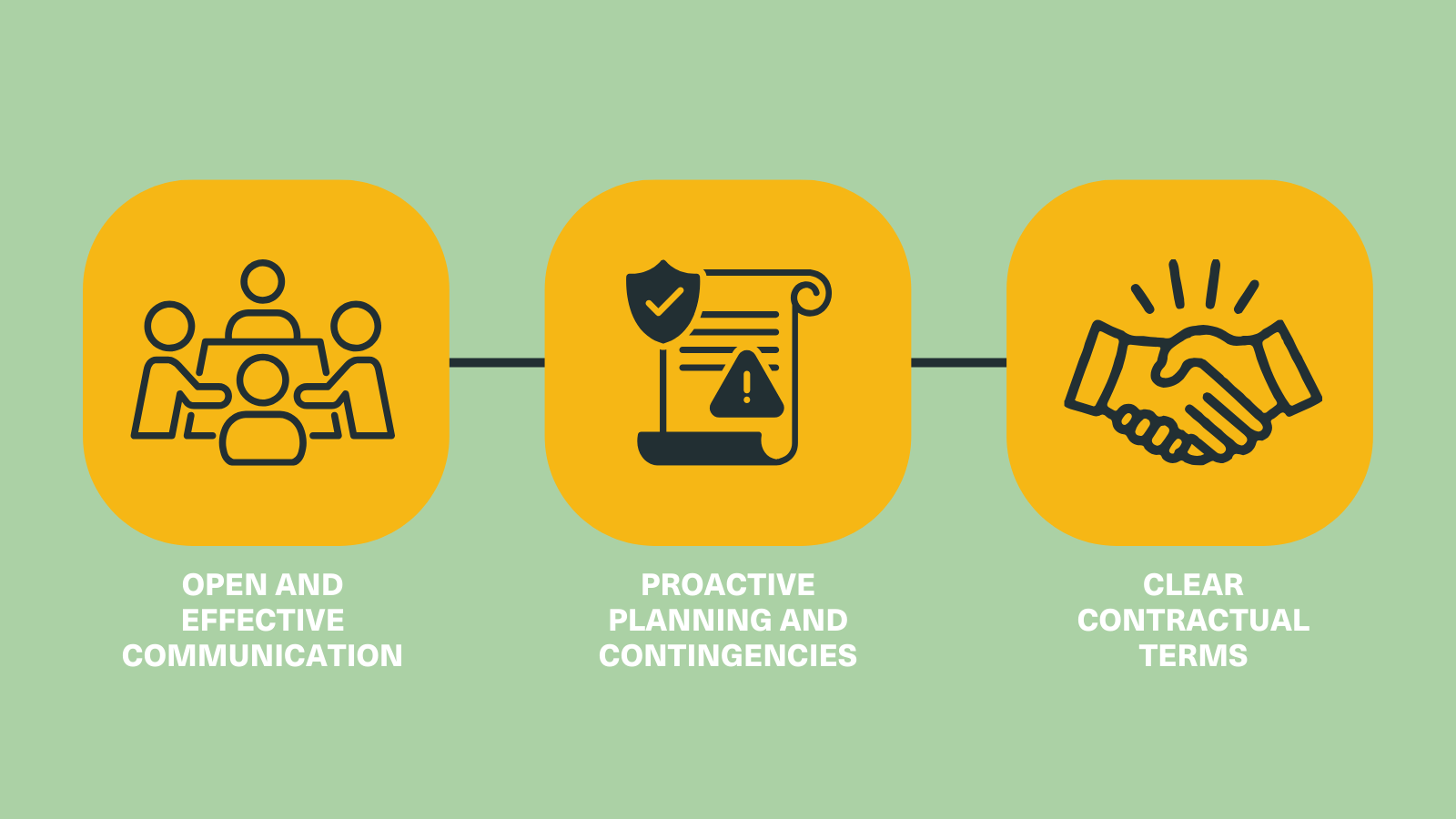What are Variations in construction?
Variations in construction refer to any changes made to the original contract, encompassing additions, omissions, or alterations to the specified works. These changes can arise from various sources, including design modifications, site conditions, client requests, or unforeseen circumstances. While variations offer flexibility to adapt to evolving project requirements, they also introduce complexities that can impact project delivery.
What are the Challenges Posed by Variations?
Variations can significantly influence a construction project's outcome:
- Cost Implications: Changes to the original scope often result in additional expenses, affecting project budgets.
- Time Constraints: Variations can disrupt the project schedule, leading to delays and potential liquidated damages.
- Contractual Disputes: Disagreements over the valuation, timing, or scope of variations can lead to legal battles.
- Quality Concerns: Alterations to the original design or specifications may compromise project quality if not managed effectively.
- Resource Allocation: Variations can strain project resources, including labor, equipment, and materials.
To mitigate these risks, effective project management practices, clear contract language, and robust change management processes are crucial. By carefully considering the potential impacts of variations and implementing appropriate controls, construction projects can harness the benefits of flexibility while minimising these associated challenges.
The Cost of Unmanaged Variations: A Detrimental Impact
Unmanaged variations can disrupt project performance and erode profitability. They can lead to significant schedule delays, cost overruns, resource constraints, productivity challenges, and disputes among stakeholders. Effective cost management strategies are essential to minimise these impacts and maintain project efficiency and profitability.
Schedule Delays and Cost Overruns
Introducing changes mid-project disrupts workflows, impacting critical path activities and leading to delays. These delays can have a ripple effect, pushing back the completion date and incurring additional costs for extended labour, equipment rental, and potential liquidated damages. A study stated that the vast majority of construction projects completed in twenty countries over the course of a 70-year period—85%, to be exact— has experienced cost overruns.

Resource Constraints and Productivity Challenges
Variations often require additional resources, such as materials, labour, and machinery. Inadequate planning and communication can lead to resource constraints, impacting productivity and potentially delaying other project activities.
Claims and Disputes Among Stakeholders
Ambiguous communication or unclear documentation regarding variations can create confusion and disagreements between project stakeholders. Disputes can eventually escalate, leading to costly claims processes, arbitration, or even legal proceedings.
What are Effective Variation Management Strategies in Construction?
Proactive strategies can minimise the negative impacts of variations and ensure project success by implementing robust change management processes, collaborative decision-making among stakeholders, and conducting thorough impact assessments for proposed changes.
Early Identification and Transparent Communication
Early identification and clear communication of potential variations are crucial. Regular project meetings and open communication channels ensure all stakeholders (client, contractor, designers) are aware of any proposed changes. Using collaborative platforms can further facilitate communication and information sharing.
Impact Assessment and Value Engineering
Before approving a variation, a thorough evaluation of its impact on the project timeline, budget, and resource allocation is essential. This assessment should consider potential knock-on effects on other project activities. Value engineering techniques can then be employed to explore alternative solutions that achieve the desired outcome while minimising disruption or cost increases. Research indicates that on average, large-scale construction projects may experience 10% to 15% variation orders during their lifecycle.

Technology for Efficiency and Transparency
Consider using technology solutions to streamline variation management. Software applications can facilitate communication, track variations in real-time, automate cost estimation based on historical data, and provide instant visibility into project status for all stakeholders.
Standardised Procedures and Clear Documentation
Establishing clear procedures for processing and documenting variations is critical. This includes a defined workflow for submitting, evaluating, and approving variations, with detailed records maintained to avoid confusion and disputes ensuring consistency and clarity.
What are the Practical Tips to Minimise Disruptions?

Effective Communication
Effective communication is the cornerstone of successful project execution. Stakeholder alignment, clear documentation, transparency, and proactive problem-solving are key components. Regular meetings and updates ensure everyone is informed, while maintaining detailed records prevents misunderstandings.
Transparency about project progress and challenges helps prevent surprises later in the project. When issues arise, open dialogue and collaboration must be initiated to lead to proactive solutions.
Proactive Planning and Contingency Buffers
Proactive planning minimises the impact of variations. Allocate a contingency budget for unforeseen changes and build flexibility into the project schedule. Identify risks upfront and use techniques like Monte Carlo simulations to assess their impact.
Implement a robust change management process to handle variations systematically. By ensuring collaboration and anticipating variations, construction projects can navigate changes more smoothly and achieve successful outcomes.
Clear Contractual Terms
Having clear contractual terms regarding variations helps to manage expectations and avoid disputes. This includes the process for submitting and approving variations, along with clear guidelines on cost responsibility for each type of variation (client-initiated, contractor-initiated, instructed variations). Specifying dispute resolution mechanisms within the contract can also expedite solutions in case of disagreements.
Conclusion
Variations are an inevitable reality in construction projects. However, by implementing practical and effective management strategies, clear communication practices, and proactive planning, you can significantly minimise their negative impact.
About us
Stonehaven is dedicated to minimising the impact of variations through effective management strategies, clear communication, and innovative technology solutions. We adopt a collaborative approach and culture of transparency to assist our clients in managing project variations efficiently and keeping projects on track for successful outcomes.
Discover how Stonehaven’s tailored consultancy services can contribute to the success of your next construction project and ensure exceptional results. Check out our services today.








